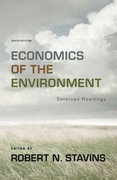Please solve precisely.
(0) Derive an expression for the theta of an option under the Black-Scholes model involving delta and gamma. (4] (1i) Explain why a deep out of the money call option in the Black-Scholes world will experience a rate of return close to the risk-free rate of return [2] [Total 6] Consider a set of risky assets in a mean-variance framework where: V: = variance of the return for asse. i Cy= covariance between the returns of assets i and / where i * j Derive an expression for the variance of a portfolio of / such assets where ; is the relative weight of asset / in the portfolio. Assume that the weights sum to unity and that short selling is prohibited. [3] (ii) Show that the variance of the returns of a very large portfolio of equally weighted allocations to the assets depends mainly on the average covariance between the asset returns. [5] [Total 8] Consider a two period recombining binomial model for $,, the price of a non-dividend paying security at times r =0, 1 and 2, with real world dynamics: Sel =5, u with probability p =S, d with probability I- p and # > 1 3 0. There also exists a risk-free instrument that offers a continuously compounded rate of return of 5% per period. The state price deflator in this model after one period is: A =0.7510 when S, = Squ =1.5220 when S, = Sod The price of a derivative at time 0 that pays 1 at time 2 if Sy So using the risk-neutral probability measure derived in (ii). 121 [Total 9]A marketing consultant was commissioned to conduct a questionnaire survey of the clients of a financial company. The total number of respondents was 650, of whom 220 had investments above a specified threshold. (i) Each respondent who had investments above the threshold was asked about the percentage of these investments that was held in the form of a certain type of trust. The respondents answered by ticking appropriate boxes and the results led to the following frequency distribution. percentage 50 frequency 22 76 73 49 (a) Present these data graphically using a carefully drawn histogram. (b) Calculate the mean percentage for the full set of 220 such respondents, assuming that the frequencies in each category are uniformly spread over the corresponding range. [5] (ii) Calculate a 95%% confidence interval for the percentage of such investors who would have investments above the threshold. [4] The same respondents with investments referred to in part (i) were also asked to specify their satisfaction with the current return received from their full portfolio of investment. This was in the form of a four-point qualitative scale: very satisfied, quite satisfied, a little disappointed, very disappointed The following two-way table of frequencies was obtained. percentage in type of trust








